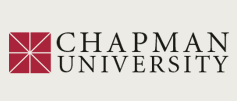Date of Award
Summer 8-2025
Document Type
Thesis
Degree Name
Master of Arts (MA)
Department
War, Diplomacy and Society
First Advisor
Dr. Kyle Longley
Second Advisor
Dr. Jeffrey Koeber
Third Advisor
Dr. Mateo Jarquín
Abstract
This thesis portfolio examines the evolving role of testimony in shaping public memory of World War II and the Holocaust. As the last generation of eyewitnesses passes, societies increasingly rely on preserved, mediated forms of testimony to understand and remember traumatic pasts. Testimony, whether handwritten, oral, visual, or digital, is not a neutral historical record but an interpretive act shaped by cultural, political, and technological forces. This portfolio argues that testimony functions as evidence and expression: it transmits trauma across generations while simultaneously reflecting the changing frameworks through which war and genocide are remembered.
The portfolio explores testimony in personal, national, and digital contexts through three essays. The first essay, "Memory and Testimony of War Trauma," analyzes the wartime letters of Dr. Allen M. Boyden, a U.S. Army surgeon who served during the final year of World War II. His correspondence reveals the psychological strain of witnessing atrocity, particularly his firsthand account of the Mauthausen concentration camp's liberation. These letters expose the difficulty of articulating trauma in real time and challenge institutional silence around combat stress and emotional fatigue.
The second essay, "Memory and Testimony in National Reckoning," explores how Holocaust memory developed in postwar Germany. Initially marked by silence, German memory culture evolved into a complex narrative of accountability and education. The essay traces this transformation through historical shifts, scholarly debates, and a case study of the Bergen-Belsen Memorial, showing how testimony, especially across generations, has shaped national identity and public commemoration.
The third essay, "Memory and Testimony in the Digital Age," focuses on how emerging technologies are reshaping Holocaust memory. Through analysis of the USC Shoah Foundation's initiatives, including the Visual History Archive, Dimensions in Testimony, and The Last Goodbye, the essay interrogates how digital platforms preserve survivor voices while raising new questions about authenticity, emotional engagement, and ethical representation.
Together, the three essays argue that testimony is not merely a record of the past but a dynamic tool for remembrance. In an age of historical distance and digital innovation, testimony remains vital for confronting trauma, shaping collective memory, and ensuring that the past continues to resonate.
Creative Commons License

This work is licensed under a Creative Commons Attribution-Noncommercial-No Derivative Works 4.0 License.
Recommended Citation
Taliep, Tiana M. "From the Battlefield to the Archive: Tracing Testimony in Holocaust Memory." Master's thesis, Chapman University, 2025. https://doi.org/10.36837/chapman.000697
